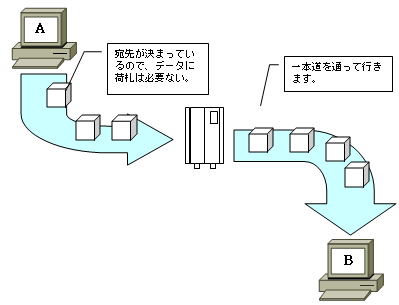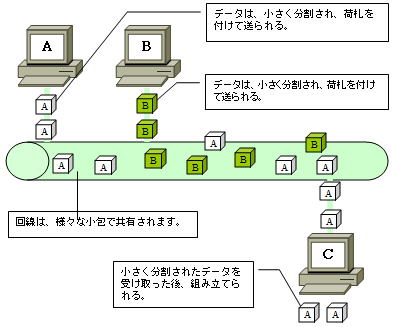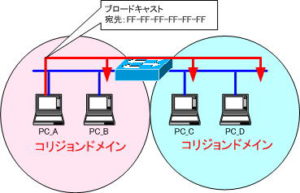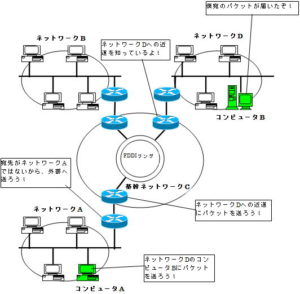Circuit switching method and packet switching method
Circuit switching method
Broadly speaking, there are two ways to communicate.
- Circuit switching method
- Packet switching method
First, let’s talk about circuit switching.
In order for data to reach its destination, a delivery mechanism is required.
When you send a letter, everyone writes the address (address of the other party), right? This is because without the address information, the postman will be at a loss as to who to deliver the mail to and cannot deliver it.
But what if there is only one way to the destination?
It looks like you can send data to the destination just by sending data!
Consider sending data from computer A to computer B. Computer A seems to be able to deliver the data to computer B just by sending the data to the destination!

In the circuit-switched method, destination information is not required because there is a single path to the destination. You can send it to the destination just by sending the data.
This mechanism is provided in hardware. If you imagine a telephone communication method, I think it is easy to understand. In a telephone network, a switch connects you to a destination.
* IP phones are different.
Circuit switching is a simple procedure because the data does not need to be tagged with destination information, but it has the disadvantage of hogging the circuit. Imagine a phone. If the person you want to call is busy, the call will not connect!
To establish a connection at the same time, you must have multiple lines.
Packet switching method
Next, let’s talk about the “packet switching method”.
In order for data to reach its destination, a delivery mechanism is required.
When you send a letter, everyone writes the address (address of the other party), right? Without address information, the postman would be at a loss as to who to deliver the mail to.
Usually, when you send a letter, write the following information:
- Destination address
- Your address
The postal system uses this information for delivery.
1. The postman sees the address of the recipient and delivers the letter to the other party.
*If the recipient’s address is incorrect, check your own address and the letter will be returned as undeliverable.
2. The recipient of the letter sees who sent the letter and writes a reply.
The packet switching method relies on this address information to deliver data.
Consider sending data from computer A to computer B.

Computer A divides the data into small pieces and sends them with a tag (address information) attached. The data delivered to PC B is assembled into the original data on PC B.
In this way, the packet switching method allows multiple terminals to share one line. However, when many terminals are connected to one line, the line is overwhelmed with data, which tends to cause congestion.
However, being able to share one line with multiple terminals is an advantage compared to circuit switching, which occupies the line.


